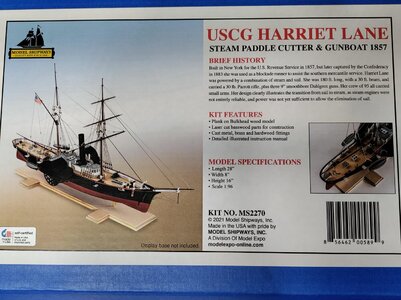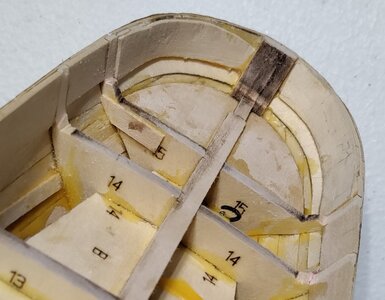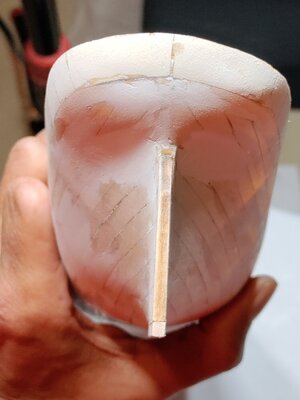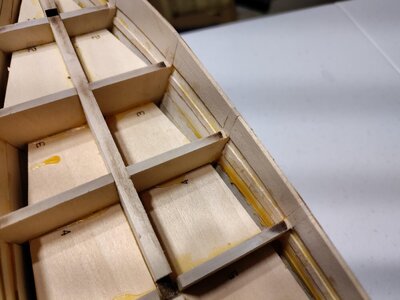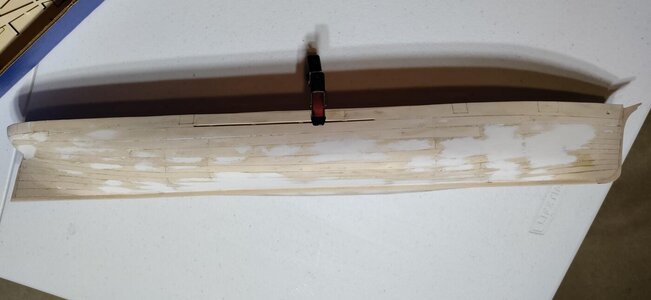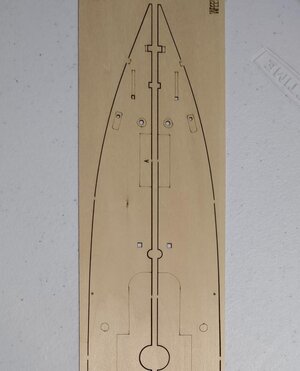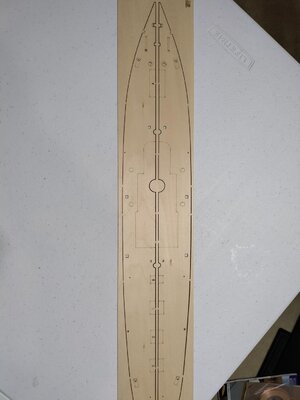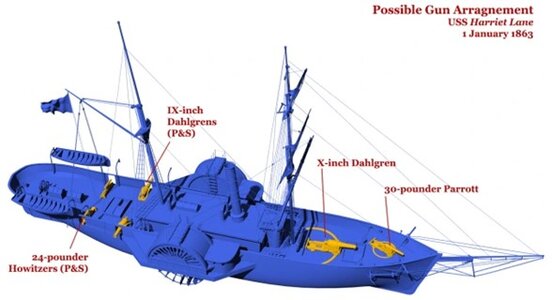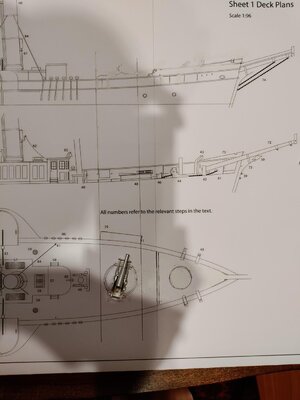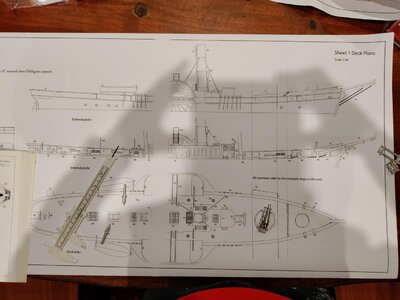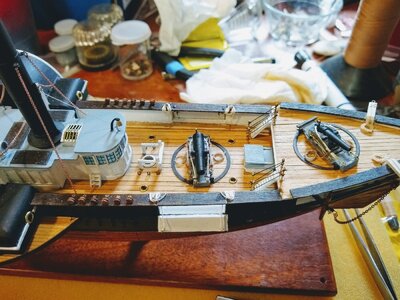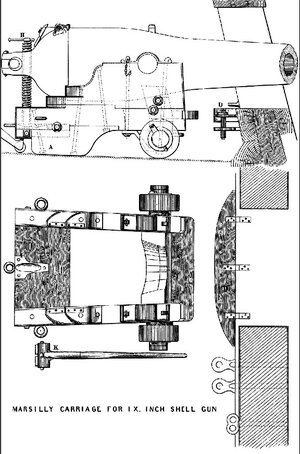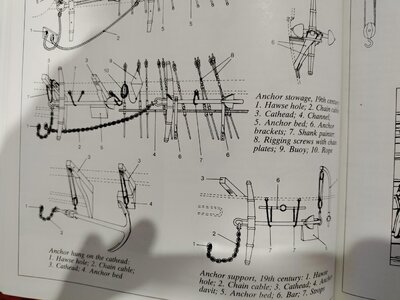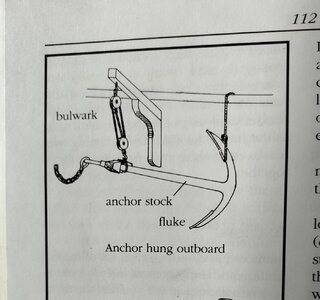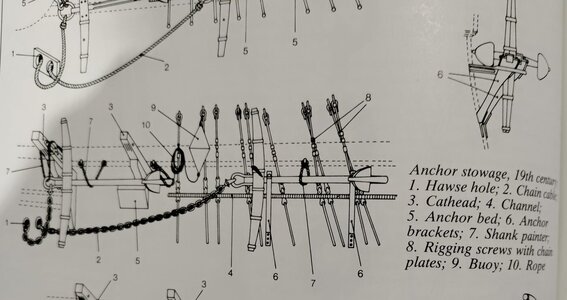- Joined
- May 25, 2020
- Messages
- 367
- Points
- 228

What ho, shipmates!
I suppose there are any number of reasons motivating our choices of ships to model. For those of you who supported my Lovely Renee nee Fair American build, you know my story. My surviving models include the Lovely Renee based on the Model Shipways Fair American kit. I also built Constructo's Enterprise. I won't repeat what I wrote in my Lovely Renee nee Fair American build log about why these ships are important to me. I'll focus on what I planned to do for my next kit and why I'm building Harriet Lane instead.
My plan was driven by a combination of scale and the evolution of fighting ships (including the evolution of armament and propulsion) from the mid 1700's to the later 1800's. To be honest, I love the ships as miniature works of art and my plan is also motivated by populating my home port with wonderful art.
Before now, my preferred scale was 1:48 (likely because of the 1:48 scale warplanes I built as a kid and hung from my bedroom ceiling). I like the size of the models and my ability to do some detailing on them. As you all know, however, there are a relatively limited number of kits in 1:48 scale and short of living in an actual museum, there would be no place to keep them. I know that the actual Lovely Renee would never let me use the dining room for a 1:48 scale model of H.M.S. Warrior or the U.S.S. Kearsarge. So, the plan was to build the Panart Royal Caroline (1:50 scale) and then Krik's Gulnara an 1834 paddle warship (1:50 scale). The objective being for visitors to Shangri-la (my home port) to be able to see how much the size of ships changed from the mid-1700s to 1830's without having to use their imaginations to double the size of a ship built in 1:96 scale. They would also see the beginning of the transition from sail to steam propulsion. After completing Gulnara I was going to start on a series of 1:96 scale ships to show the continued evolution of ships from paddle warships to stern screw warships. It was the plan to then build L'Orenoque (1848), U.S.R.C. Harriet Lane (1861), U.S.S. Kearsarge (1861) and H.M.S. Warrior (1860).
However, as I started on Royal Caroline I noticed some things that I would never be able to tolerate particularly because of the inspiring and beautiful work you've done on your builds of this Panart kit, in particular Nigel Brooke's work. Then, because of a series of broken hose bibs, a flooded lower level, and, therefore, a flooded shipyard, I gave up ship building for most of the summer and fall. Now, things are practically shipshape again and a funny thing happened.
I was standing in my front entry and thought "that's a great place for the Harriet Lane!"
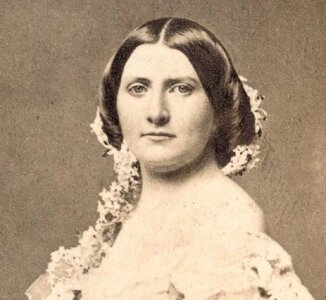
This, friends, is Harriet Lane! She was a notable beauty on both sides of the Atlantic. Harriet was orphaned young and became the ward of her uncle, James Buchanan. Buchanan held a variety of senior posts in the government, including Ambassador to the Court of St. James. Harriet accompanied her uncle to London, met Queen Victoria and was accorded by Her Majesty the rank of "ambassadors wife" to ease her social engagements as Buchanan's niece. When Buchanan became the 15th and only ever bachelor President of The United States of America, Harriet Lane was his "First Lady" officially managing the White House during the four years leading up to the Civil War.
So, I started the kit and have been reading every build log I could find. I found Pete Gutterman's lovely version of Harriet Lane circa 1863 and am using that model for my muse. https://shipsofscale.com/sosforums/...log-by-peter-gutterman-completed-build.11909/
Frankly, it's because of Pete's kind responses to my questions about his masterpiece that I'm starting this log. Thank you again, Pete! I will post more and include some pictures in the next short while in the hope that my shipmates will help me with their knowledge, skill and wisdom.
Blessings. Peace. Gratitude.
Chuck
I suppose there are any number of reasons motivating our choices of ships to model. For those of you who supported my Lovely Renee nee Fair American build, you know my story. My surviving models include the Lovely Renee based on the Model Shipways Fair American kit. I also built Constructo's Enterprise. I won't repeat what I wrote in my Lovely Renee nee Fair American build log about why these ships are important to me. I'll focus on what I planned to do for my next kit and why I'm building Harriet Lane instead.
My plan was driven by a combination of scale and the evolution of fighting ships (including the evolution of armament and propulsion) from the mid 1700's to the later 1800's. To be honest, I love the ships as miniature works of art and my plan is also motivated by populating my home port with wonderful art.
Before now, my preferred scale was 1:48 (likely because of the 1:48 scale warplanes I built as a kid and hung from my bedroom ceiling). I like the size of the models and my ability to do some detailing on them. As you all know, however, there are a relatively limited number of kits in 1:48 scale and short of living in an actual museum, there would be no place to keep them. I know that the actual Lovely Renee would never let me use the dining room for a 1:48 scale model of H.M.S. Warrior or the U.S.S. Kearsarge. So, the plan was to build the Panart Royal Caroline (1:50 scale) and then Krik's Gulnara an 1834 paddle warship (1:50 scale). The objective being for visitors to Shangri-la (my home port) to be able to see how much the size of ships changed from the mid-1700s to 1830's without having to use their imaginations to double the size of a ship built in 1:96 scale. They would also see the beginning of the transition from sail to steam propulsion. After completing Gulnara I was going to start on a series of 1:96 scale ships to show the continued evolution of ships from paddle warships to stern screw warships. It was the plan to then build L'Orenoque (1848), U.S.R.C. Harriet Lane (1861), U.S.S. Kearsarge (1861) and H.M.S. Warrior (1860).
However, as I started on Royal Caroline I noticed some things that I would never be able to tolerate particularly because of the inspiring and beautiful work you've done on your builds of this Panart kit, in particular Nigel Brooke's work. Then, because of a series of broken hose bibs, a flooded lower level, and, therefore, a flooded shipyard, I gave up ship building for most of the summer and fall. Now, things are practically shipshape again and a funny thing happened.
I was standing in my front entry and thought "that's a great place for the Harriet Lane!"

This, friends, is Harriet Lane! She was a notable beauty on both sides of the Atlantic. Harriet was orphaned young and became the ward of her uncle, James Buchanan. Buchanan held a variety of senior posts in the government, including Ambassador to the Court of St. James. Harriet accompanied her uncle to London, met Queen Victoria and was accorded by Her Majesty the rank of "ambassadors wife" to ease her social engagements as Buchanan's niece. When Buchanan became the 15th and only ever bachelor President of The United States of America, Harriet Lane was his "First Lady" officially managing the White House during the four years leading up to the Civil War.
So, I started the kit and have been reading every build log I could find. I found Pete Gutterman's lovely version of Harriet Lane circa 1863 and am using that model for my muse. https://shipsofscale.com/sosforums/...log-by-peter-gutterman-completed-build.11909/
Frankly, it's because of Pete's kind responses to my questions about his masterpiece that I'm starting this log. Thank you again, Pete! I will post more and include some pictures in the next short while in the hope that my shipmates will help me with their knowledge, skill and wisdom.
Blessings. Peace. Gratitude.
Chuck
Last edited:

